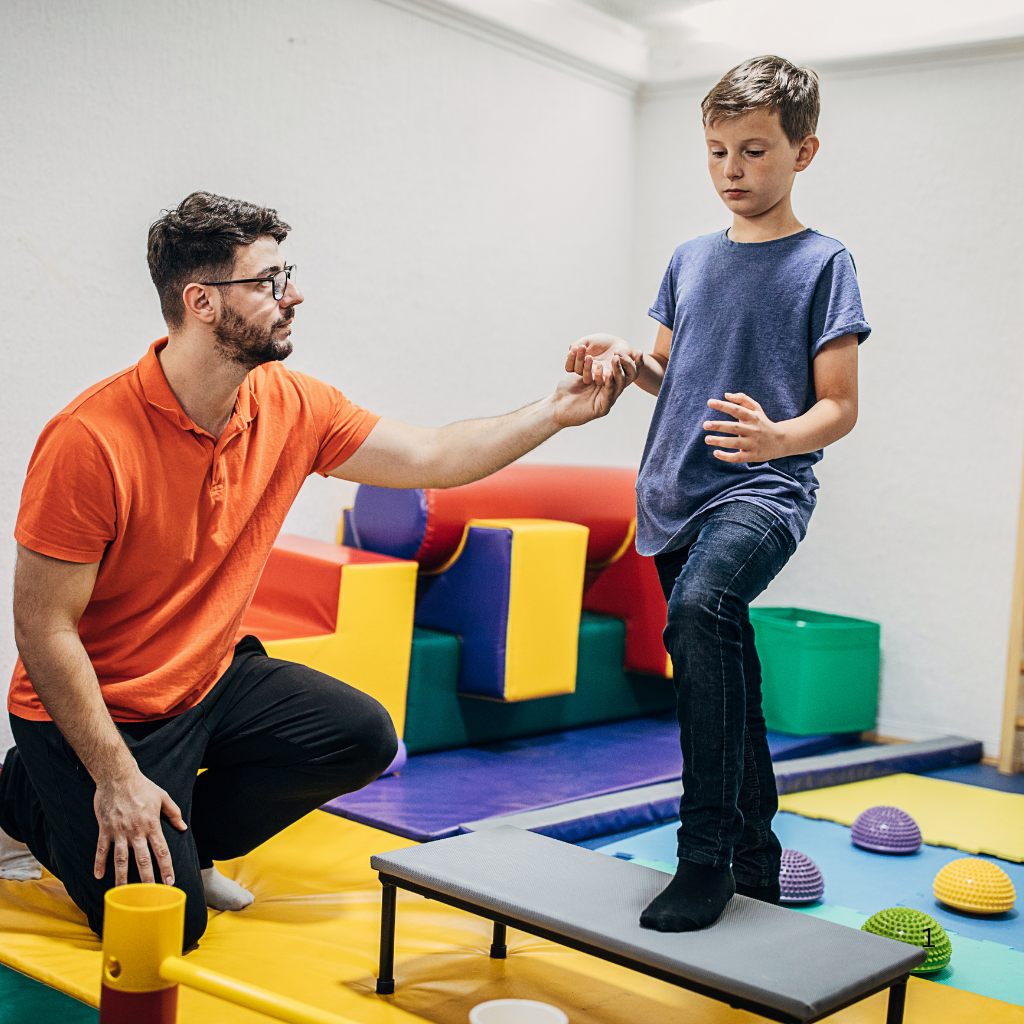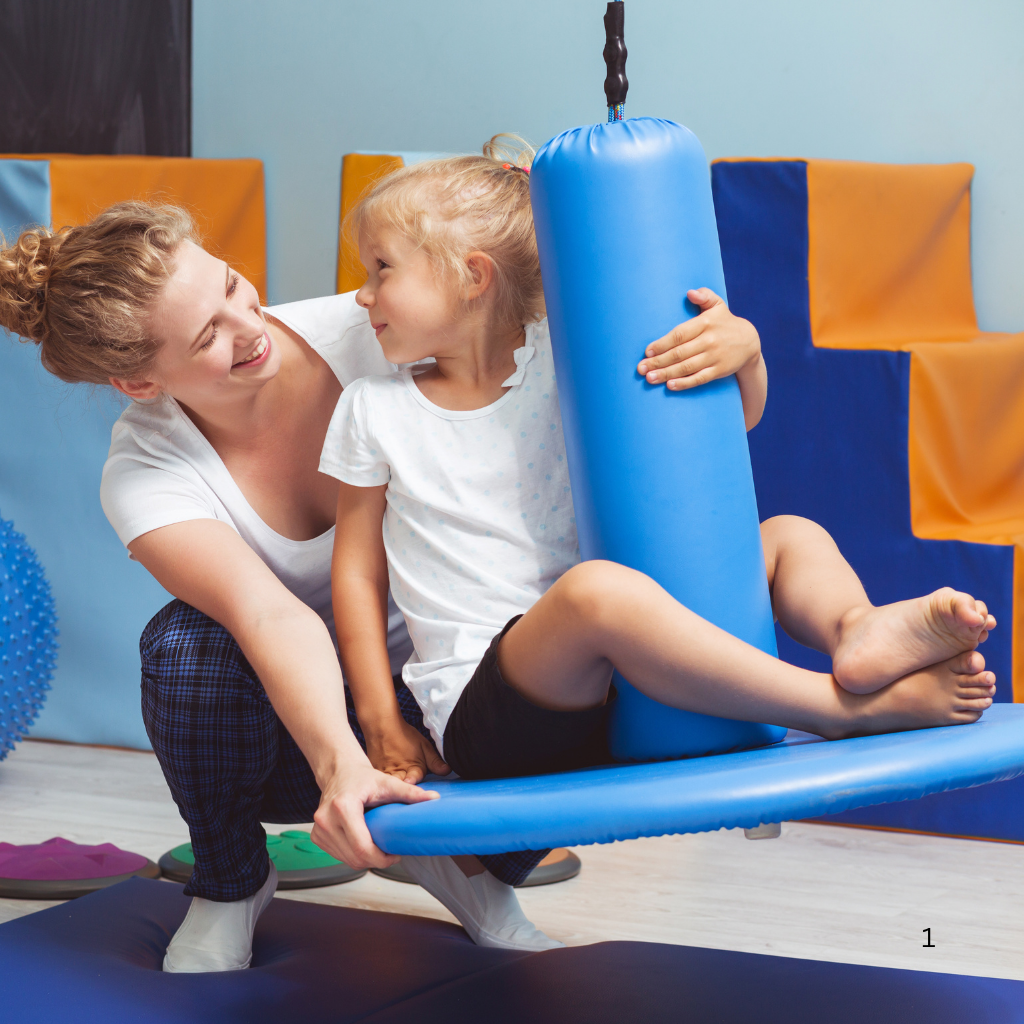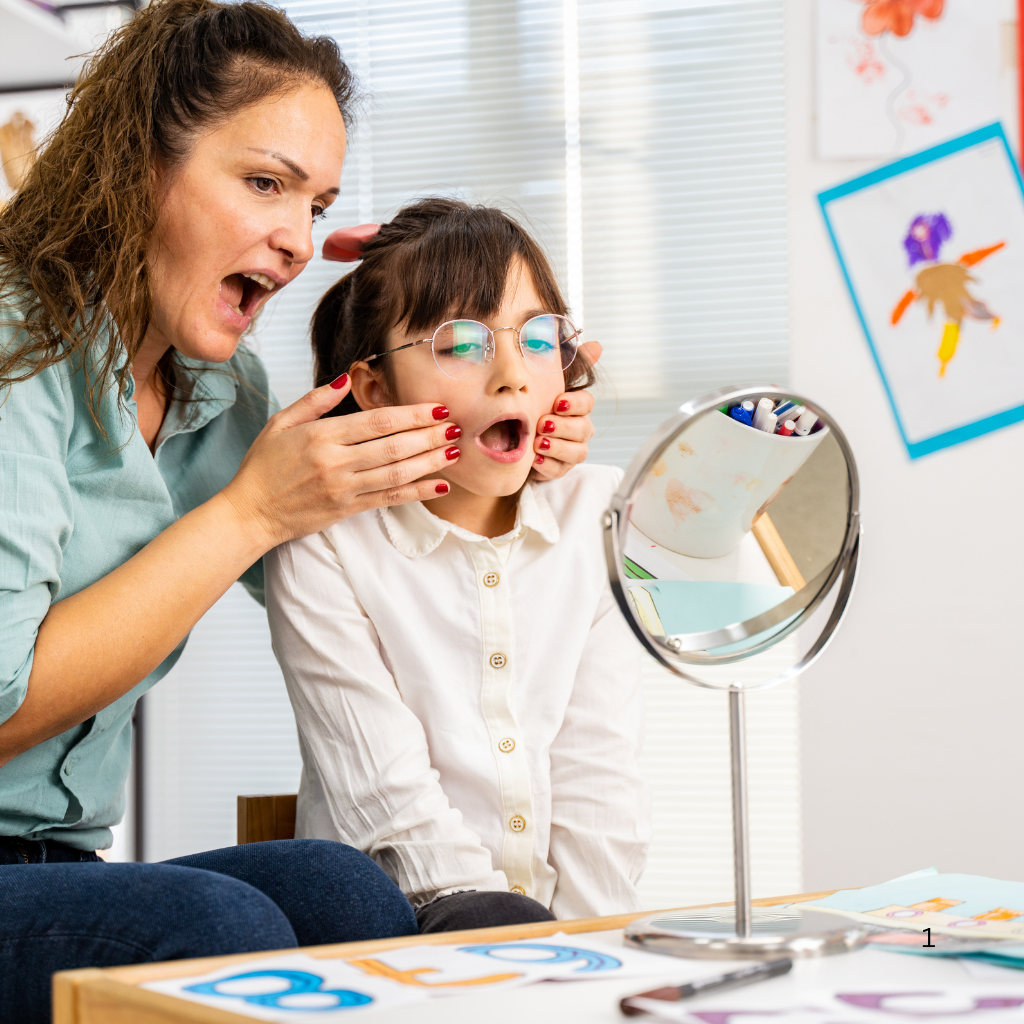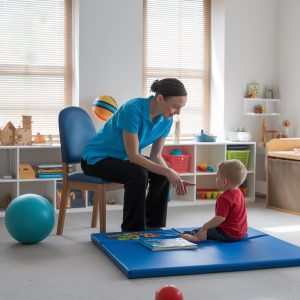Occupational therapy is essential in desensitisation therapy for kids by employing specialised techniques to reduce sensory oversensitivity. Through tailored strategies like graded exposure and sensory tools, occupational therapists help children gradually adjust to various stimuli, improving their daily functioning and coping with challenges. These methods assist in immediate relief and contribute to long-term wellness. Explore how these approaches can benefit your child’s specific needs.
Key Takeaways
- Occupational therapy customises desensitisation strategies for each child’s allergens and sensory sensitivities.
- Therapists teach relaxation techniques to reduce anxiety during gradual exposure to allergens.
- Sensory tools like weighted blankets and fidget toys enhance the effectiveness of desensitisation sessions.
- Occupational therapists provide ongoing support, adjusting strategies as the child’s tolerance to allergens improves.
- They collaborate with parents to integrate sensory-friendly practices and tools into the child’s daily routine for sustained progress.
What is Desensitisation Therapy, and How Does It Work?
Desensitisation therapy is a structured method to reduce your child’s adverse reactions to specific stimuli.
It gradually introduces these stimuli while teaching relaxation techniques to manage anxiety.
This therapeutic approach helps your child overcome their fears in a controlled, supportive environment.
Defining Desensitisation and Its Purpose
Understanding the concept of desensitisation therapy is key to appreciating its role in helping children overcome fears and anxieties.
Desensitisation therapy, often used in allergen immunotherapy, aims to reduce allergic symptoms by gradually exposing the immune system to increasing doses of the allergen.
Here’s how it works:
- Allergic Symptoms: Initially, the body’s immune response causes allergic symptoms.
- Immune System Training: Gradually increasing doses help train the immune system.
- Allergic Reaction Management: Reduces the severity of allergic reactions over time.
- Allergen Immunotherapy: Aims to achieve long-term tolerance to allergens.
- Treatment Effectiveness: The treatment alters the immune response, lessening allergy symptoms.
This approach guarantees your child can lead a more comfortable, less anxious life.
The Process of Desensitisation Therapy
While exploring the treatment options for your child’s allergies, you might find desensitisation therapy a particularly effective approach. This therapy uses systematic desensitisation techniques to help your child gradually adjust to allergens.
The core of systematic desensitisation therapy involves performing desensitisation through gradual exposure to the allergen in controlled increments. This method trains your child’s immune system to tolerate the substance without severe reactions.
Desensitisation therapy systematically exposes your child to increasing doses of the allergen, allowing their body to adapt over time. The treatment aims to reduce symptoms and increase your child’s comfort and confidence levels. Additionally, regular therapeutic activities can improve a child’s memory power, as gradual exposure requires focus, consistency, and mental processing, all of which support cognitive development.
The Role of Relaxation Techniques in Therapy
As you explore desensitisation therapy for your child, it’s crucial to understand the role of relaxation techniques in this treatment. Occupational therapy often incorporates these methods to enhance allergen immunotherapy treatment’s overall effectiveness and comfort.
- Muscle Relaxation Techniques: Helps in reducing physical tension during exposure sessions.
- Controlled Breathing: Assists children in maintaining calm during challenging allergen exposures.
- Guided Imagery: Supports a positive mental state, reinforcing safety and control.
- Progressive Relaxation: Gradually relaxes each muscle group, boosting the child’s ability to cope with stressors.
These techniques aim to improve the quality of life for children and their families by ensuring therapy sessions are more manageable and less intimidating.

How Occupational Therapy Helps with Sensory Desensitisation
As you explore options for your child’s sensory sensitivities, understanding the role of occupational therapists in sensory processing is essential.
They employ techniques tailored to address sensory issues, helping your child adapt more comfortably to their environment.
Each therapy session is thoughtfully structured to guarantee it’s effective and supportive, maximising the benefits for your child.
The Role of Occupational Therapists in Sensory Processing
Occupational therapists play an essential role in sensory processing by employing targeted desensitisation techniques that help children manage and overcome their sensory sensitivities.
As you navigate the challenges of paediatric allergy, understanding the early stages and the role of occupational therapy can be transformative.
- Personalised Strategies: Tailoring desensitisation to the specific allergen under careful supervision.
- Relaxation Exercises: Incorporating techniques to reduce anxiety and enhance coping skills.
- Effective Treatment for Allergies: Using gradual exposure methods has proven to be a reliable treatment option.
- Sensory Integration: Helping kids integrate sensory input more effectively.
- Continuous Support: Providing ongoing guidance and adjustment of strategies.
These approaches make occupational therapy a cornerstone in managing sensory processing issues, ensuring a smoother path towards tolerance and improved daily functioning.
Key Techniques Used in Occupational Therapy for Sensory Issues
Understanding the key techniques used in occupational therapy for sensory issues can significantly improve your child’s processing of sensory information. Occupational treatment employs a variety of desensitisation therapy methods designed to address and alleviate sensory issues. These strategies are not only safe and effective treatments but also lead to significant improvement in symptoms.
| Technique | Description | Emotional Impact |
|---|---|---|
| Graded Exposure | Gradual introduction to sensory stimuli. | Reduces anxiety, builds confidence. |
| Sensory Integration | Activities to help organise sensory input. | Enhances emotional regulation. |
| Play Therapy | Guided play that includes sensory elements. | Fosters joy, reduces fear. |
| Behavioural Reinforcement | Positive feedback to encourage coping strategies. | Boosts self-esteem, promotes resilience. |
These approaches are tailored to manage sensory sensitivities and mild allergy-related responses through strategies such as graded sensory exposure and structured desensitisation techniques, often supported by occupational therapists and, where necessary, coordinated with specialist allergy services.
How Therapy Sessions Are Structured for Maximum Effectiveness
To maximise the effectiveness of occupational therapy for sensory desensitisation, therapists meticulously structure each session to meet your child’s unique needs.
Just like immunotherapy, where treatment works by increasing doses to build tolerance, occupational therapy gradually introduces sensory stimuli, boosting your child’s ability to cope without overwhelming them.
Here are the key steps involved:
- Assessment of Sensitivity: Identifying specific triggers at an early age.
- Customised Exposure Plans: Tailoring sessions to address the most pressing symptoms.
- Gradual Increase in Stimulus: Mimicking immunotherapy’s method of increasing doses.
- Monitoring Reactions: Adjusting therapy intensity to prevent severe allergic reactions.
- Regular Reviews: Ensuring the treatment’s effectiveness by evaluating progress and making necessary adjustments.
Sensory Tools and Equipment Used in Occupational Therapy
As you explore the role of sensory tools in occupational therapy, it’s essential to understand how items like weighted blankets, fidget toys, and sensory swings can benefit your child.
Choosing the right tools tailored to your child’s needs can significantly enhance comfort and sensory processing.
We’ll also discuss how to integrate these sensory aids effectively into daily routines, fostering a supportive environment for growth and learning.
The Benefits of Weighted Blankets, Fidget Toys, and Sensory Swings
Weighted blankets, fidget toys, and sensory swings significantly benefit occupational therapy, especially for children with sensory processing disorders.
These tools aren’t just supplementary; they’re integral to successful treatment, often where traditional treatments may not fully address the underlying causes of sensory issues.
- Weighted Blankets: Enhance feelings of security and provide deep pressure stimulation, aiding in relaxation and sleep.
- Fidget Toys: Improve concentration and reduce anxiety by allowing tactile exploration and movement modulation.
- Sensory Swings: Support balance and motor skills through rhythmic movements. Fine motor skills like swinging, jumping, or dancing improve coordination and regulate the nervous system, promoting calm and control.
- Versatility: Suitable for various settings, including home and therapy environments.
- Evidence-Based: Supported by extensive research, indicating effectiveness in sensory modulation and promoting long-term developmental benefits.

Choosing the Right Sensory Tools for Your Child’s Needs
Understanding the benefits of weighted blankets, fidget toys, and sensory swings sets the stage for selecting the most effective sensory tools tailored to your child’s unique needs.
Choosing the right sensory tools in occupational therapy is essential to improve symptoms linked to specific allergens and sensory sensitivities. Each child’s response to desensitisation therapy varies, necessitating a personalised approach.
Scientific studies support the strategic use of sensory tools to enhance therapy outcomes. When therapy is complete, the right tools can continue to provide comfort and support.
Consider your child’s specific reactions and preferences: do they seek pressure, motion, or tactile experiences? An occupational therapist can guide you through this selection process, ensuring the sensory tools align perfectly with your child’s needs.
How to Use Sensory Aids Effectively in Daily Routines
Integrating sensory aids into your child’s daily routine can significantly enhance their ability to cope with sensory challenges.
Occupational therapy uses these tools to support sensory integration, which is critical in desensitisation therapy, similar to approaches seen in immunotherapy for allergies.
Here’s how you can embed these aids effectively:
- Weighted Blankets: Use during downtime or bedtime to promote calmness.
- Noise-Cancelling Headphones: Helpful in noisy environments to reduce sensory overload.
- Textured Toys: Incorporate in playtime for tactile stimulation and focus enhancement.
- Visual Timers: Assist in smoothly managing shifts between activities.
- Scented Inhalers: Utilised to calm during high-stress situations, aiding in better emotional and environmental control.
Employing these sensory aids in daily routines can markedly improve your child’s sensory processing and overall therapy outcomes.
Strategies Parents Can Use to Support Therapy at Home
As a parent, you play a critical role in reinforcing your child’s gains in desensitisation therapy.
Creating a sensory-friendly home environment will provide a safe space to ease sensory challenges significantly.
Incorporating daily activities that encourage sensory regulation and keeping track of progress can help you adjust strategies as your child grows and their needs change.
Creating a Sensory-Friendly Environment
Creating a sensory-friendly environment at home can significantly enhance the effectiveness of desensitisation therapy for your child. Here are strategies you can implement:
- Reduce Allergens: Use allergen-proof mattress covers to protect against house dust mites, which often trigger asthma symptoms and seasonal asthma.
- Filter the Air: Install HEPA filters to capture pollen and house dust, reducing mouth itching and irritating sensations.
- Adjust Lighting: Use soft, natural light to minimise sensory overload, which benefits children sensitive to bright lights.
- Comforting Spaces: Create a dedicated, cosy corner with cushions and blankets for moments when your child needs to retreat and regroup.
How to Track Progress and Adjust Strategies Over Time
To effectively support your child’s desensitisation therapy at home, it’s crucial to track their progress and adjust strategies as needed regularly.
While medical immunotherapy may be considered by specialist allergy services in some cases, occupational therapy in the UK supports children with food-related sensitivities, reactions to house dust mites, or pet-related discomfort through sensory-based desensitisation techniques. These approaches focus on helping children gradually tolerate everyday sensory triggers in a safe and structured way.
- Maintain a detailed journal: Document reactions and improvements.
- Set measurable goals: Define clear, achievable objectives.
- Regular consultations with therapists: Guarantee alignment and get professional advice.
- Adjust the home environment: Minimise exposure to known allergens.
- Celebrate small victories: Acknowledge and reward progress to motivate your child.
Is Desensitisation an Effective Treatment for Allergies in Kids?
Is desensitisation a reliable method for treating your child’s allergies?
It’s important to weigh how it stacks up against other treatments, as research shows varying success rates and the potential for developing further allergies.
We’ll explore the evidence supporting desensitisation and discuss its efficacy and prospects in managing paediatric allergies.
Evidence-Supporting Desensitisation Works
Growing evidence supports the effectiveness of desensitisation strategies in helping children manage sensory and mild allergy-related challenges. Rather than relying on high doses of allergen extracts, UK-based approaches often focus on gradual exposure to triggers in a controlled and supportive environment, sometimes in coordination with specialist allergy services for medical management when needed.
Here are some compelling reasons to evaluate desensitisation:
- Desensitisation reduces the severity of allergic reactions over time.
- Immunotherapy effects have been documented to prevent new allergies from developing.
- Regular exposure helps in modifying the immune response towards allergens.
- Studies show that desensitisation can lead to long-term remission of allergy symptoms.
- It’s a proactive approach that targets the root cause rather than just managing symptoms.
Desensitisation offers a promising avenue for you to explore in managing your child’s allergies effectively.

Compared with Other Treatment Options
While desensitisation therapy offers significant benefits, it’s vital to compare it with other treatment options for managing children’s allergies.
In the UK, children with significant allergies may be referred to a specialist allergy clinic, where treatments like immunotherapy for pollen or other triggers may be considered. Occupational therapists, meanwhile, support children by helping them manage the everyday impact of sensory or allergy-related challenges through tailored strategies and environmental adjustments.
Immunotherapy from an early age may also help curb the future development of additional allergies.
Both treatments focus on long-term relief, but your choice might depend on specific allergy types, the child’s age, and how they respond to initial treatments. It’s essential to weigh these options carefully, ensuring the selected method aligns with your child’s needs and medical advice.
Conclusion
In summary, as you navigate your child’s sensory challenges, remember that occupational therapy plays a vital role in desensitisation therapy. Therapists use targeted sensory tools and strategies to enhance your child’s ability to process sensory information more effectively. Supporting your child’s therapy at home is essential for progress. While not a cure for allergies, this approach significantly improves sensory processing issues. Keep collaborating with your therapist and stay proactive; you make a positive difference in your child’s life.




